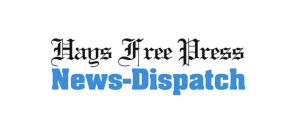By Moses Leos III
Improving mobility, along with roads and intersections were a few of the prime topics discussed by more than 40 people at the March 9 Kyle Transportation Master Plan workshop at the Kyle Library.
Public input was the first step in Kyle’s update of its Transportation Master Plan. Kyle’s current plan was crafted by Lockwood, Andrews and Newnam (LAN) in 2005.
The city rehired LAN; their team includes three groups: Gap Strategies, Prime Strategies and Kimley-Horn Associates.
According to Mike Weaver, principal at Prime Strategies, crafting a long-term but malleable plan will be critical. The plan will create a “playbook” for city officials and the community to stay on track.
The plan, slated for presentation to the Kyle City Council by December 2015, will use the 2005 plan and the 2010 Comprehensive Plan, as a starting point. It will be centered on moving people by road, bicycle and transit.
Also included will be neighborhood roads, and the concept of “complete streets,” or taking into account sidewalks, bike lanes, and landscape along with roads.
LAN will assess the transportation needs of the city by looking at population and traffic modeling data from the Capital Area Metropolitan Planning Organization and Hays County. From there, funding options will be assessed. They range from the private sector, to federal and local entity funding.
Weaver said keeping options open toward funding is necessary. Having “shovel ready” projects could provide assistance to obtain funding.
But the first step was to find what the public views as priority. According to Jeff Barton, principal at Gap Strategies, much of the conversation focused on road conditions, connectivity and future mobility projects, such as the proposed Kyle Loop.
Mobility was a vital topic for Tracy Scheel, who vied for easier access into downtown and IH-35 from east Kyle. Bike lanes were also key, but only on roads “that don’t have a higher speed limit.”
Mayor Pro-Tem Diane Hervol held connectivity concerns south of Center Street to Yarrington Road, primarily for emergency service vehicles.
“We understand the urgency for some of the mobility issues,” Hervol said. “Mobility in our not-too-distant future has to be a priority.”
Kyle resident Scott Ingalls said he was “very frustrated” with the four-way stop format of FM 1626 and Kohler’s Crossing.
“A light or roundabout would be perfect there,” Ingalls said.
For Sarah Ryan, re-evaluating the Lehman and Goforth intersection is priority, primarily sidewalks for Lehman High students.
But she held concerns on the width of the Lehman Road bond project. She believes the two and three lane option is “not going to be acceptable” with the city’s current growth.
“To me, it’s enough work to keep the residents contented until they can come up with some other ideas,” Ryan said. “It’s a farce, the way I see it.”
City Manager Scott Sellers understood how the city’s growth has led to “less than ideal” road conditions. Administering a pavement assessment will “keep the good roads good and slowly bring the bad roads up to an acceptable score.” Those scores will shape the city’s Capital Improvement Plan.
He said input on neighborhood roads was also helpful.
“Sometimes, we focus on those primary roads we’re used to driving, but we don’t’ gather input from residential neighborhood streets where residents see these problems everyday,” he said.
Mayor Todd Webster expected focus to be on roads, but said conversation on connectivity was equally vital. Citizens’ “diverse opinions” provide a jumping off point for the city.
“We’re a long way away, but we’ll get there,” Webster said. “It’s going to take some time, but this is the beginning of the narrowing down of what the priorities are.”










